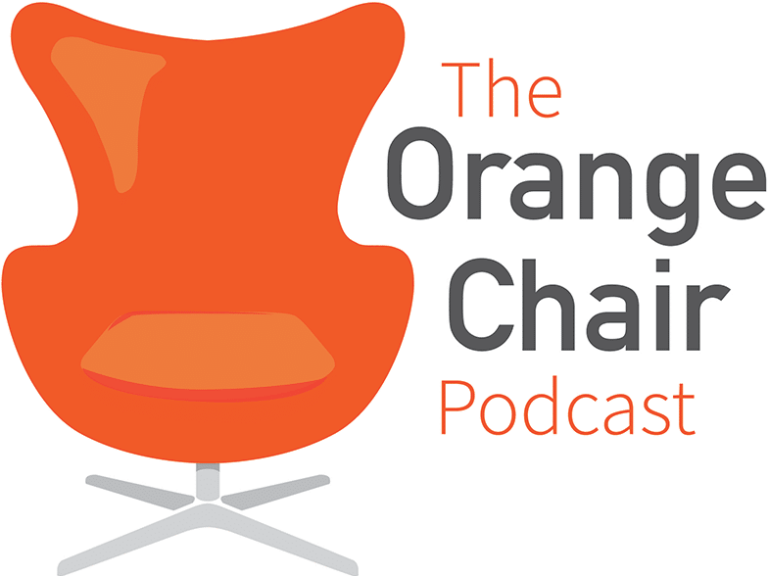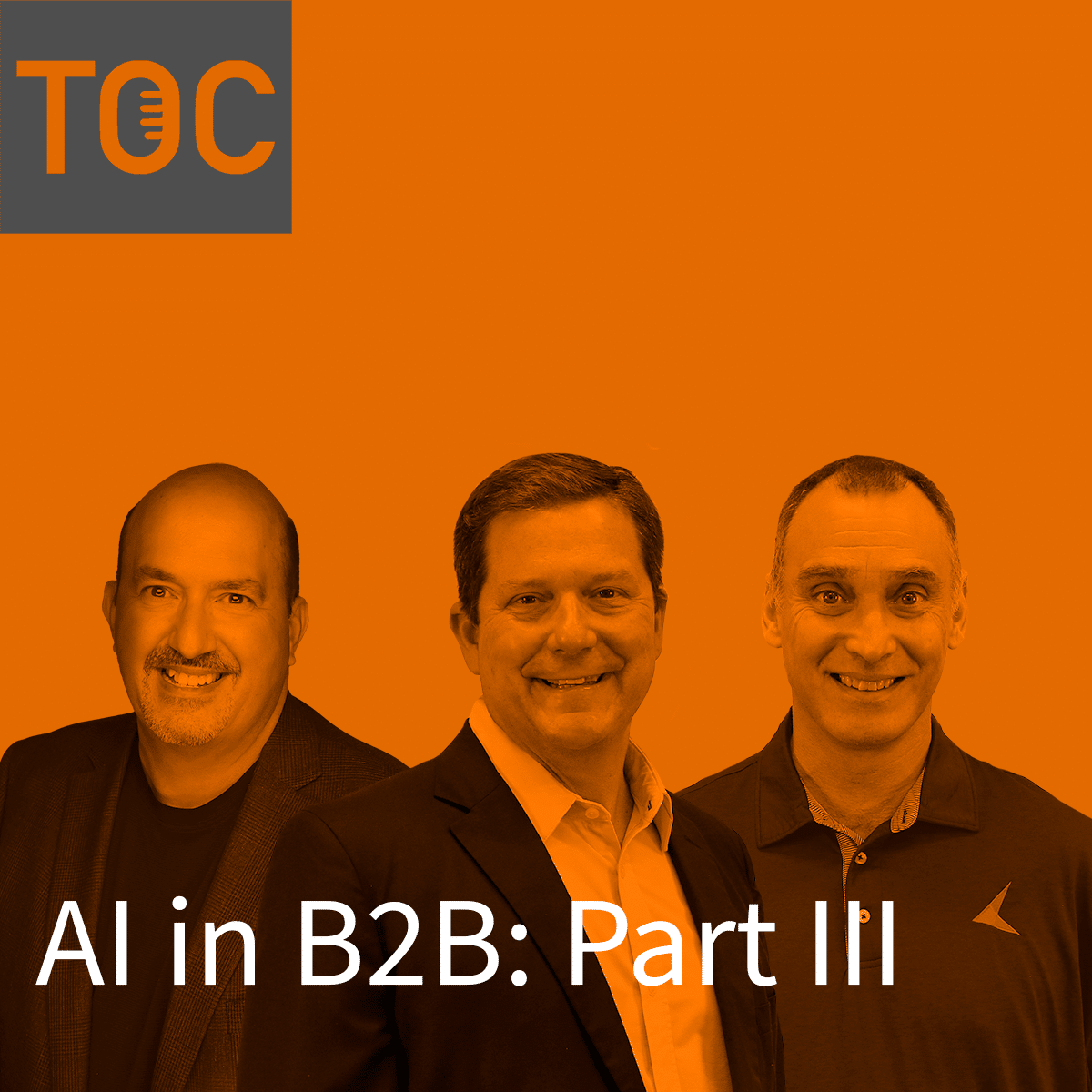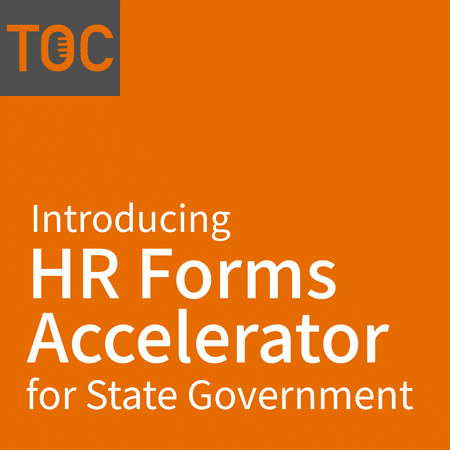This website uses cookies so that we can provide you with the best user experience possible. Cookie information is stored in your browser and performs functions such as recognising you when you return to our website and helping our team to understand which sections of the website you find most interesting and useful.
Listen now on your favorite streaming service!
presented by KeyMark


Summary
The following is a transcription from The Orange Chair Podcast, “Introduction: UiPath”
In this episode, we sit down with Chet Chambers, Vice President and Chief Evangelist for UiPath, and Jim Maholic, Senior Director of the Value Engineering Team with UiPath. This episode explores robotic process automation (RPA) from UiPath‘s perspective and the value of implementing RPA for an organization.
To listen to the full episode or any other episode, you may do so by selecting your preferred podcast listening method on The Orange Chair Podcast Page.
Transcription
Host (18s): Hi everyone, and welcome back to The Orange Chair Podcast! Today’s episode is a very special episode because we have two guests from UiPath.
Here at KeyMark, we have a brand new RPA vendor that is UiPath. In this episode, we’ll be doing a deep dive into what makes UiPath a leading RPA provider in today’s digital world.
My guests today are Chet Chambers and Jim Maholic. I would love for you to introduce yourselves. Who are you and how did you get to where you are now?
Jim Maholic (48s): Thanks for having us on! I’m Jim Maholic, the Senior Director of the Value Engineering Team. How did I get here? I’ve twice been a CIO in manufacturing companies. I’ve been a consulting partner, and that has informed how I got to where I am today. It gives me a perspective to be on both sides of the desk if you will.
I’m a vendor today and I also help pitch what we do, but I’ve sat across the desk as a CIO. And so I always have to evaluate things from that perspective. And that’s a little bit about me.
Chet Chambers (1m 18s): My name is Chet Chambers. Now, Jim, you’re being a little modest. You forgot to tell him that you are a two-time best-selling author. If you’re looking for a real strategy book, you need to go look Jim up. That is some powerful stuff.
My name is Chet Chambers. I’m a 13 and a half year RPA guy. I am one of the oldest RPA people around. I’m a 30 year IT guy and I’ve scaled three different organizations. The last one was HP with 224 bots in a little over a year, and 20 million in hard value, and over 300,000 hours saved. And that’s when it was hard.
The tools that are available today make it so much easier. I work with the Strategic Engagement Team. I work with some of our biggest accounts and thank you, Alex, for having me today.
Host (2m 2s): Thank you both for being on. I always like to kick off my episodes by asking a fun fact. Can you guys tell me a fun fact about yourself?
Jim Maholic (2m 11s): I’ll jump in. Chet mentioned one thing. I have written two books on strategic IT topics that have both been bestsellers. But I also consider myself a Renaissance man. I’m a nationally published sports photographer. I used to cover the NFL and SEC football. I’m also a performing musician. I played the bass for many years and performed for crowds of over a thousand. So, that’s a little bit about me outside of IT.
Chet Chambers (2m 34s): Jim, I didn’t know you played the bass. I’ll have to get with you later on that. So something interesting about me is I used to be a dirt track driver. I raced for about eight years and made the nationals twice. That was a lot of fun. I gave up fishing; I was an avid fisherman as a young man, but I gave it up. Now I just go catching, Alex, because we don’t go out there unless we put one in the boat anymore.
Host (2m 59s): That’s awesome. Is that something that you frequent on the weekends?
Chet Chambers (3m 3s): Yes, I’m a pond fisherman. There are three different ponds within walking distance of my house that my son and I go to.
RPA Through the UiPath Lense
Host (3m 13s): I just want to kick off this episode by asking the question, what is RPA from UiPath’s perspective? Can you guys give me a high-level definition of UiPath’s RPA?
Chet Chambers (3m 27s): RPA stands for robotic process automation. I’m going to give you a really quick history lesson here, Alex. RPA started out as task automation. Years ago, a lot of old guys like me were writing Perl scripts. We were doing it in shell and we were writing in SQL to automate things we didn’t want to do over and over and then came RPA. It was a package that lets you screen scrape. It will let you automate mundane tasks that happened exactly the same way.
Then it grew to hyperautomation. That was where AI and machine learning are brought in and long-running workflows. Now we’ve evolved yet again and today RPA is about the fully automated enterprise. How do you go from end to end and give the people in your organization time back to do the things that are important?
Jim Maholic (4m 18s): I would just add to that. You missed a piece that you always tell everybody when we’re on calls together, that RPA is basically a time machine that we give back to the company.
All this automation that we do, the goal of it is to return time back to the employees. You hire these smart people, but you don’t want them wasting their time on these tedious, mundane tasks. Let’s offload those tedious tasks to automation and let those smart people do the work that you hired them to do.
Host (4m 45s): You mentioned that you say it’s a time machine. Can you elaborate that on that a bit?
Chet Chambers (4m 52s): I actually got called by the national science committee on my claims that we had created a time machine. I had to define that it doesn’t move you backward or forwards in time.
What it does is generates usable time for all of the departments that have it deployed. It does that by taking away the repetitive, repeating time-sucking tasks that are in every department and it lets the robots do those. It gives that time back to the individuals to go and do those more important, more valuable things.
Let’s let the humans do human things like be creative. Let’s let them work on the high-value projects and let’s let the bots move the dollars and cents around. Let’s have the robots do the things that robots are really good at and let’s free those people up to be creative.
Host (5m 45s): We at KeyMark like to say, you get back to doing what you love and we’ll automate the rest. I like what you say there, that it’s a time machine.
Speaking of that, where do you see the value in UiPath for an organization? When we actually had some previous discussions, you guys mentioned time and velocity. Can you elaborate on that for our listeners?
Time and Velocity
Jim Maholic (6m 9s): Having been a CIO twice and both times we were going through large transformation efforts and those large transformation efforts are multi-year projects. I think a lot of the executives have come to expect IT projects to be these multi-year endeavors.
With automation, we can return value back to the organization in weeks. We can deliver robots that can do some great things to begin showing actual value and actual time saved in a matter of weeks.
We certainly can roll this out over an enterprise and it may take a year or so if the enterprise is broad throughout the globe, but if we’re looking to do some things spectacularly right now, like help a call center take more calls in a day or help the finance organization get more effective and functional quickly, we can do that in a matter of weeks. And so the time to value I think is probably RPA’s greatest selling point.
Chet Chambers (7m 2s): To build on that Jim, you don’t have to do this alone. Customers don’t have to figure this out. Let us guide you down the UiPath to automation. We’ll tell you where the low-hanging fruit is. We’ll show you the quick automations.
You can go to our marketplace and download bots that are already built and you can do some adjustments to get them to run in your environment. But that time to value is so quick. Jim, I love what you said there. I’m a 30 year IT guy, and I remember projects that were going to cost a hundred million dollars and take two years, and then halfway through, we decided we’re doing something else and nothing ever came of it.
This is a place where the business and IT start to dance. You do the waltz. There’s a marriage there, and a partnership to where the business knows what the needs are and now IT can readily, quickly, and safely answer those needs of the business. That’s what makes this so powerful.
Host (7m 57s): So, would you say that there’s a better value in starting small, or does that matter? If a company has something that they know they want to do and it might be a huge endeavor. Where do you see that line?
Chet Chambers (8m 16s): Go after your biggest problem. Where’s your biggest backlog? Where is your biggest bottleneck? Where are your accuracy rates the worst? Where is your largest spend on labor? Let’s go attack the things that are going to make a difference.
70% of the RPA programs that failed, failed because they used their dollar capital, their political capital, and their people capital to automate things that didn’t move the needle. I’m a huge deep-end kind of guy. Let’s go after the biggest value because remember, you’re not going to do this alone. We have consulting services. There is a partner network out there that can walk you through how to do this, but I say, go big.
Jim Maholic (9m 0s): I’ll give you the counterpoint. I think going big is great. And I think when we get organizations that see the vision and the executives see automation doing great things in an area. Let’s go all out and do enterprise-wide automation. I think going big is great.
But for those organizations that are just now exploring automation, being able to dip their toe in I think is one of the great values of RPA. I’m not an advocate that we should do a lot of small projects. I think we should get to what Chet said as quickly as we can. But for those companies that are wanting to explore it, they can start off very small and pick a very small area wherein essence, the risk is low and maybe the return for that particular example is low, but it gives them a chance to build some skills and build a muscle there and then once they see the capabilities, then let’s go big or go home.
Host (9m 51s): I love the idea that if a client has something that they know that they want to accomplish, something big that they know is going to help them in the long run, that they can do that with UiPath.
But I also love the idea that if somebody just wants to dip their toes in, they can also do that with UiPath to just see the value and see the return on investment a little bit at a time, and then perhaps get to something bigger.
So I’d love to talk about RPA support. We have a wide range of listeners all the way from the end-user to the C-level, can you guys speak to the importance of RPA support from a top-down perspective and from a bottom-up perspective?
Gaining Internal RPA Support
Jim Maholic (10m 40s): I’ll start with a C-level. I think the key here is every C-level initiative, that requires C-level approval and involvement, usually has a lens that looks through what I call the SEAR imperative. Things that favorably influence sales, expenses, assets, and risks.
We can address each of those areas to satisfy the C-level. So if they can see that vision, then they get excited and they can move that organization outward to say, I want all of my directs to start thinking about how they can automate because they see how we are going to use Chet’s term “move the needle”.
I think that’s where a great opportunity is for RPA. We can show them specific areas where we can increase revenue, help them cut expenses, optimize assets, and mitigate risk. We ourselves have many success stories in each of those spaces that I’m sure you do as well.
Chet Chambers (11m 32s): It’s an “and”, it’s not an “or”. He took the top-down, now let me give you the bottom-up.
Every business user that I’ve ever met, every good business user, let’s call her Martha. If I talk to Martha, she’s in the day-to-day grind, and then I talked to Martha’s manager, which one of those two will be able to show me where the true bottleneck is? Which one of those two is going to know today what it is that gets in the way of the daily worker working through the problems that they’re working through on a daily basis? That’s Martha, that’s the end-user.
The people in the trench need to have an opportunity to say, “if you were to automate this, it would give me back 15 minutes a day, and if we automated that, that would give me another 45 minutes a week.”
Well, you don’t have to put very many minute segments together until you start talking about hours a day and not just for one individual in the department, but for every individual in the department. That bottom-up, that community that you’ll build in RPA, is absolutely essential. Now, when you couple that with what Jim said, that top-down, focused, goal-based approach, now I’ll meet you in the middle.
RPA Use Cases
Host (12m 42s): Speaking of the end-user, do you have any specific use case examples of how people can get started with RPA now? Is there anything that comes to mind from an end-user’s perspective?
Jim Maholic (12m 56s): Well, I think one of the key and exciting areas we talk about oftentimes is in the call center space. You think about a call center agent, when they receive a call, oftentimes they have to bring up many different screens or applications so they have the full view of that customer to be able to talk intelligently to that customer.
While they’re asking you about the weather and they’re having small talk with the customer, robots can pop that screen up with all those other screens open almost instantly. Now we’ve saved that time with the call center agent, a couple of things happen. The call is going to go faster because I’m not having to wait, spending a minute or two building those screens myself and the customer’s going to be happier because they’ll get their call started and hopefully ended quicker.
The call center itself can handle more calls in a day. And the average handle time, which is a general metric within call centers, likely goes down as we can handle more calls a day and each of those calls are quicker, but not less effective, they’re just quicker. So I think that’s a great use case where we talk about how organizations can begin to see the effectiveness that is RPA very quickly.
Chet Chambers (14m 4s): When you think about that, think about a single pane of glass. That call center rep has four or five different systems feeding one screen that’s there instantly.
Jim, I’m going to go the old way to finance. Finance is mathematical in nature and linear in its thinking. It is a great place to add automation. Imagine if you cut your DSO (day sales outstanding) by one day. How much is that worth to your organization?
Imagine if the robots prepared all of your data for the office of the close and you were able to close your books a day earlier, or two days earlier. Imagine all of the posting of checks and the validation and the three-way match and all of the different things that, right now, human beings do.
All of those things, the robots run them immediately and make sure that your money is in the right place at the right time.
I’ll give you another quick one. HR onboarding. Do you know what’s more important than onboarding? Offboarding. Well, imagine if you had robots that got them in and got them all their access and got them trained, but then when they were let go or moved on, it stopped all of their accesses, deactivated their ID.
The thing that we want to tell you here is that there are opportunities in every line of business.
Host (15m 31s): From your examples, I can already see what we had talked about earlier from a C-level perspective with that finance piece how you were giving the example of needing to close the books quicker, or the value in that business processing.
But then the end-user perspective when you’re talking about HR and how an end-user that has to go through and do those HR examples or the call center example that you were mentioning, Jim. Those are great use cases.
I do want to talk about the future of UiPath. So in the next five or ten years, where do you see RPA, or what changes do you foresee happening with the product?
The Future of RPA
Chet Chambers (16m 18s): If you look at the roadmap, we’re going to lean more and more into the AI side. RPA started as task automation. Now it’s about process mining. Let’s let true AI run across multiple systems and show you where your biggest bottlenecks are.
The other big thing that I see is RPA for the good. The second most searched skillset on LinkedIn right now is an RPA developer. Well, imagine if we started teaching that in college and there’s a huge push for that. Let’s start letting those that are unemployed or underemployed right now, take the training and come back into the workforce, being able to contribute something, because you can learn this. This is not something that’s only for the highly technical.
Jim Maholic (17m 11s): The one thing I would add to that is in addition to the AI and the machine learning capabilities, I see that the reach of automation is getting better and better starting off.
We talked about these various individual business areas and how automation can play a role, whether it’s in finance or call center, but we’re also seeing where companies are doing mergers and acquisitions.
The value of a merger or an acquisition is how fast can we integrate these two companies to get to scale and we can use robots to help do an awful lot of that. You’ve got multiple systems to homogenize, multiple data streams to homogenize, and the robots could do so much of that work so that we can get the time to value on the merger, much quicker and much more compressed.
So I see automation playing a role beyond just the business areas, but I see it being more across the enterprise and across business areas as we go forward.
Chet Chambers (18m 5s): That’s a good one. He sparked another thought there. The test suite. Being able to do regression tests, not only your robots but regression test other applications and other ERPs as you go in and make your code changes. Imagine being able to dynamically build a test set to test every scenario. It’s a lot more than just automation anymore, it’s a fully automated enterprise.
There’s an entire suite of products that take you from discovering what it is that you should automate through how to test it to reduce your support costs and showing value. Because if you’re not showing the value, why are you doing it?
Jim Maholic (18m 49s): I’ll pile on that per second. I think having been a CIO, I learned early on that my ability to get funding for my next project is contingent on my ability to show value from my past project.
I think one of the great tools we offer with our product suite is this Insights tool that allows you to go in and see how many times the robot ran, how long it took, and compare that to what that task took manually before it was automated. Now I can see maybe I saved 12 minutes every time we ran it. And across the population of say 2000 call center people, those 12 minutes times 2000 people is so much time savings per day or per week or per month or per year. And we can have empirical data that shows that.
When I want to get funding for my next automation project, I can use that information to show value. Here’s how much time we drove out of the process with the last project. And now we want to go in and do some other ones.
I think one of the challenges going forward with automation as it is with all IT projects, is IT governance and the ability to manage the pipeline coming in by prioritizing which of the many good ideas that come in through that RPA pipeline are potential automation projects. How do I then build those out and deploy them at scale? So I think that the IT governance piece will become a bigger and bigger part of the RPA story as well.
RPA and IT Governance
Chet Chambers (20m 21s): I couldn’t agree more. IT guys are genetically altered to protect the system, protect the data and protect the system. And the first answer is always no, but governance is at the very core of the UiPath platform, and it was built for that reason. We want to make sure that you can safely deploy these across your organization.
Host (20m 43s): So when you guys are talking about governance, can you elaborate on that a little bit for me?
Jim Maholic (20m 48s): From my perspective, you think about in a typical IT setting back when I was a CIO and Chet probably had the thing kind of thing, people kept coming in with ideas.
The demand far exceeds your ability to supply against that demand. So now we’re going to see that there has to be some mechanism that helps identify and prioritize those requests. There’s not enough money or time to do them all, so we have to have some prioritization. That’s part of what we call IT governance.
It’s knowing how to determine which initiatives we should be acting on next. It could be, I do them with my staff. It could be they’re important enough that the governance committee says we will fund consulting teams to help because even though we don’t have the in-house staff to do it, that’s valuable enough for us to go execute and bring in consultants.
I view the governance organization as being made up of the leaders of all your major business areas, such as the leader of finance and supply chain and HR, IT, of course, sales and marketing, as well as somebody from the executive suite to act as kind of the overseer. Somebody has to step in and say, here’s how I decide as the senior executive we’re going forward.
I think the governance issue is becoming an issue also in the RPA and automation space, because as people see the exciting opportunities that automation provides the company, more and more people want to get new capabilities for their areas. And now the demand, once again, exceed supply, we have to have some mechanism to help us manage and prioritize.
Chet Chambers (22m 34s): And how do you do it safely? Sometimes if they don’t know a lot about RPA or robots, they think, “these bots are going to run around and do nefarious activities inside my organization.” Well, no, it’s only given access through a single sign-on or active directory to what it is that it’s going to do.
It’s also limited by the codebase or the no code base or low code base that says this bot performs these functions. The singularity has not occurred. These don’t go rogue inside your organization.
Governance is a lot about, can I see exactly what that law did? Where did it move? When did it move? Anything that is automated is transparent to the auditors and that’s key.
Citizen Developed RPA
Host (23m 20s): Great. Well, thank you guys for that explanation. You know, as our time comes to a close today, do you guys have any final thoughts? Is there anything that I asked that you want to elaborate on? Or maybe there’s something that I didn’t ask that you would like to speak to?
Chet Chambers (23m 40s): All of us are going to be automation users. A great many of us will be automation builders. It’s not just for hardcore backend developers. There’s an entire group called citizen developers or business developers.
It’s using a lightweight tool called Studio X that will give you the power to automate the things that are in your way, and then share those with the person that sits to your right and to your left.
Jim Maholic (24m 7s): I’ll add to what Chet said about citizen development. When a lot of people begin thinking about automation, they think that it’s code-driven therefore I have to be an exceptional code to develop these things. That’s not the case. With our tools, it’s very much an object-oriented kind of thing.
We’ve got our marketing people who are very bright marketers, but by their own admission are not technologists. They’ve built robots to help with the marketing campaigns to manage them. It’s just coordinating activities with robots between Outlook and Excel.
It’s as simple as that to some of the complex things we’ve talked about. There’s just so much capability that automation can bring to an organization.
As Chet said, as we get to citizen development and people begin to think of their own ways on their own desktop they’d like to automate, so much can happen to make their lives easier. So that now I don’t have to do this manually. I can let a robot do this while I work on the parts of my job that I like to work on.
Wrap-Up
Host (25m 6s): Well, thank you both so much for joining me today. I appreciate your time and, thank you for this great introduction to UiPath.
Chet Chambers (25m 15s): Thank you.
Jim Maholic (25m 26s): Thank you, Alex.
Host (25m 26s): Thank you for joining us on The Orange Chair podcast. This podcast is brought to you by KeyMark and is produced by Clay Tuten and me, your host, Alex Frazier.
For more information on RPA, please visit our website at KeyMarkInc.com/RPA. Never miss an episode by subscribing to our podcast channels wherever you listen to podcasts and also like, and subscribe on Instagram and Facebook at The Orange Chair Podcast. Want to get in touch? Send us an email at TOC@KeyMarkInc.com.







